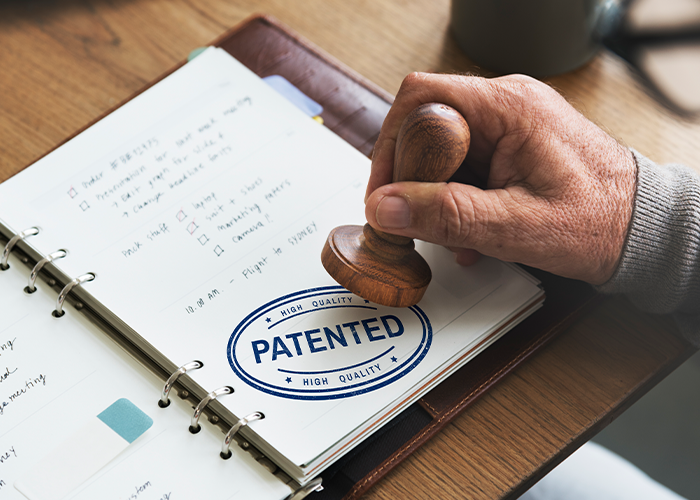In today’s era, where nations compete in innovation, ideas alone are insufficient unless they materialize into tangible achievements that impact lives and open new horizons for development. Since creativity is the fruit of intellect and effort, it’s essential to grant every innovator the full right to protect their invention from imitation or unauthorized exploitation. Here, patents emerge as legal guardians, safeguarding inventors’ rights and granting them exclusivity in benefiting from their intellectual outputs.
At their core, patents empower innovators to transform their concepts into economically valuable projects that can be developed, marketed, and invested in. They represent the initial step in a journey that begins with imagination and culminates in a product serving society.
This article delves into the concept and role of patents, exploring the registration process and the conditions required for obtaining them. It also presents real-life examples of registered inventions, highlighting the tangible impact of these patents on inventors’ lives. Furthermore, we examine the significant role played by “Sada Law Firm” in this domain within the Kingdom of Saudi Arabia, as a specialized legal entity dedicated to protecting and registering creators’ rights within the approved regulatory frameworks.
Understanding Patents
A patent is essentially the right granted to an inventor, allowing them exclusive use or benefit from their invention for a specified period, typically twenty years. This right isn’t bestowed upon just any fleeting idea; the invention must be novel, involve an inventive step, and be industrially applicable.
The purpose of granting patents isn’t solely to protect the inventor’s effort but also to encourage innovation and creativity. When individuals know there’s a system ensuring their rights and preventing others from exploiting their inventions without permission, they’re more motivated to present new ideas that contribute to societal advancement.
- Patents confer this legal privilege provided the idea is original, unprecedented, and offers a technical solution to a problem. This means that mere ideas aren’t sufficient; they must materialize into tangible innovations that are industrially applicable and demonstrate inventive effort beyond general knowledge in the field.
- Patents encompass a broad spectrum of innovations, from machinery and industrial technologies to chemical compositions, advanced software, and sometimes new methods for solving existing problems. What sets patents apart from other forms of intellectual property, such as copyrights and trademarks, their direct association with the technical and functional aspects of an invention, rather than its appearance, branding, or expressive content. By securing patents, inventors gain exclusive rights that allow them to control how their inventions are used, ensuring both legal protection and commercial advantage.
- Legally, patents grant their holders the authority to assert their rights, whether through licensing to others, preventing unauthorized use, or even litigating against any entity infringing upon those rights. Herein lies the significant economic value of patents; they not only preserve rights but also transform innovations into commercial assets that can be invested in, sold, or transferred.
Registering Patents
Registering patents is the legal procedure that grants inventors recognized exclusive rights to protect their inventions from unauthorized use or exploitation. This registration isn’t automatic upon conceiving a new idea; it necessitates systematic steps, starting from submitting the application to obtaining official approval from the relevant authority.
First: Authorities Responsible for Patents Registration
The name of the responsible authority varies by country, but their purpose is unified: protecting industrial property. In the Kingdom of Saudi Arabia, the responsible authority is:
- Saudi Authority for Intellectual Property (SAIP)
In other countries, relevant authorities include:
- United States Patents and Trademark Office (USPTO)
- European Patents Office (EPO)
- World Intellectual Property Organization (WIPO) – for international registration through the PCT agreement
Second: Steps to Register a Patents
- Assessing Patentability: Ensure the invention meets the three criteria: novelty, inventive step, and industrial applicability.
- Preparing Technical Documents: Draft a detailed description of the invention, including:
- Technical field
- Technical background
- Detailed description of drawings or models (if any)
- Claims defining the scope of legal protection
- Technical field
- Electronic Submission: In Saudi Arabia, applications are submitted via the SAIP portal, requiring:
- Completing the application form
- Attaching technical documents
- Paying the necessary fees
- Completing the application form
- Formal and Substantive Examination:
- Formal Examination: Verifying completeness of data and documents.
- Substantive Examination: Reviewing the novelty of the invention and comparing it with prior registrations.
- Formal Examination: Verifying completeness of data and documents.
- Publication and Public Disclosure: Upon preliminary acceptance, the application is published in the official bulletin, allowing for objections.
- Final Grant: If no objections arise, or they are legally resolved, the patent is officially granted and registered under the applicant’s name.
- Protection and Follow-up: Post-publication procedures include:
- Paying annual fees
- Defending rights in case of legal infringement
- Possibility of licensing or selling
- Paying annual fees
Conditions for Patent Registration
Having a new idea is commendable, but protecting it and paving the way for it to become a legally recognized invention is even more crucial. To transform this creativity into a genuine patent, it must meet several conditions that ensure its eligibility for protection and distinguish it from existing ideas. Fulfilling these conditions isn’t just your gateway to obtaining an official document; it’s also proof that you’ve offered the world something worthy of being registered in your name.
- Novelty: The invention must be entirely new, meaning it hasn’t been previously published, displayed, used, or even registered anywhere globally. Patents aren’t granted for known ideas, regardless of timing. Therefore, ensure your innovation adds something unprecedented.
- Inventive Step: It’s insufficient for the invention to be new; it must also involve an inventive element not easily deducible by someone skilled in the relevant field. In other words, your invention should exhibit a touch of creative intelligence, offering a non-traditional solution to an existing problem or presenting a new method for performing a familiar task.
- Industrial Applicability: A good idea becomes an invention when it can be practically applied. Your invention should be implementable in a specific industrial field, whether industrial, medical, technological, or otherwise. Patents aren’t granted for non-applicable ideas or theoretical concepts that can’t be translated into a real product or process.
These three conditions form the foundation upon which patents are built in most global systems, including Saudi Arabia. If your innovation meets these criteria, you’re just steps away from transforming it into protected intellectual property.
Examples of Patents
When we look at the most impactful inventions that have transformed human lives in this era, we find that behind each significant invention lies a story that began with a simple idea, believed by its creator to deserve protection and realization. Patents were the turning point that gave these ideas the wings to soar into markets, factories, laboratories, and even space.
Consider these examples:
- 3D Printer: Initially a fanciful idea, its first patent was registered in the 1980s. Today, it’s used in medicine, engineering, education, and even in printing houses! It’s a patent that revolutionized manufacturing concepts.
- Smartphones and Touch Technology: Every tap on our screens today is protected by a series of patents registered by major companies like Apple and Samsung, monopolizing technologies that were unimaginable two decades ago.
- Noise-Canceling Headphones: It may seem like a simple feature, but it’s the result of meticulous research, protected by patents that made it a cornerstone in the audio industry.
- Portable Water Purification Filters: Now used in emergencies and remote areas, these originated from ideas registered as patents aimed at solving humanitarian issues in simple and effective ways.
These and other examples demonstrate that patents aren’t exclusive to geniuses or large corporations; they’re a legitimate right for every ambitious mind with an idea worth bringing to life. Perhaps your next innovation will be the example highlighted in future discussions.
Sada Law Firm’s Expertise in Patent Registration
Sada Law Firm, headquartered in the Kingdom of Saudi Arabia, is among the leading firms specializing in legal services related to patents. The firm boasts a team of experts specializing in legal consultations, contract drafting, company establishment, and legal support for human resources.
Sada offers comprehensive services in the field of patents, including:
- Legal Consultation:
Providing in-depth legal advice on whether your invention qualifies for patent protection, and guiding you on the most appropriate type of intellectual property rights applicable to your innovation. - Drafting and Filing Patent Applications:
Assisting in preparing all required technical and legal documentation necessary for submitting the application to the Saudi Authority for Intellectual Property (SAIP) or other relevant international bodies. - Follow-up and Communication with Authorities:
Representing inventors during the examination and review phases, responding to objections, and ensuring that the application proceeds smoothly until the patent is granted. - Protection and Enforcement of Patent Rights:
Supporting clients in pursuing legal action against any infringement of their patented rights, and advising on litigation, settlements, and dispute resolution. - Commercialization and Licensing Support:
Helping inventors draft licensing agreements and contracts that allow others to use the patent legally in exchange for royalties or strategic partnerships.
With its deep knowledge of Saudi regulations and international standards, Sada Law Firm empowers innovators to protect their work and capitalize on their intellectual assets with confidence and clarity.
Conclusion
In an age where ideas are the true currency of progress, patent protection has become a vital tool to ensure that these ideas are not only preserved but also transformed into tangible innovations that shape the future.
From inventors working in home laboratories to entrepreneurs launching cutting-edge startups, the patent system offers a structured legal framework that turns creativity into commercial and social impact. Yet navigating this system requires both technical accuracy and legal expertise—two pillars that Sada Law Firm proudly offers.
Whether you’re looking to protect a groundbreaking invention, explore opportunities to monetize your patent, or simply learn more about how the patent process works in Saudi Arabia or internationally, Sada stands ready to walk with you every step of the way.
Your idea deserves protection. Your innovation deserves recognition. Your rights deserve Sada.






